Museums & Institutions
For Years, This Historic 225-Ton Landscape Art Installation Was at Risk of Demolition—Now It Officially Has a New Home
The reconfigured piece by Elyn Zimmerman had been renamed "Sudama."
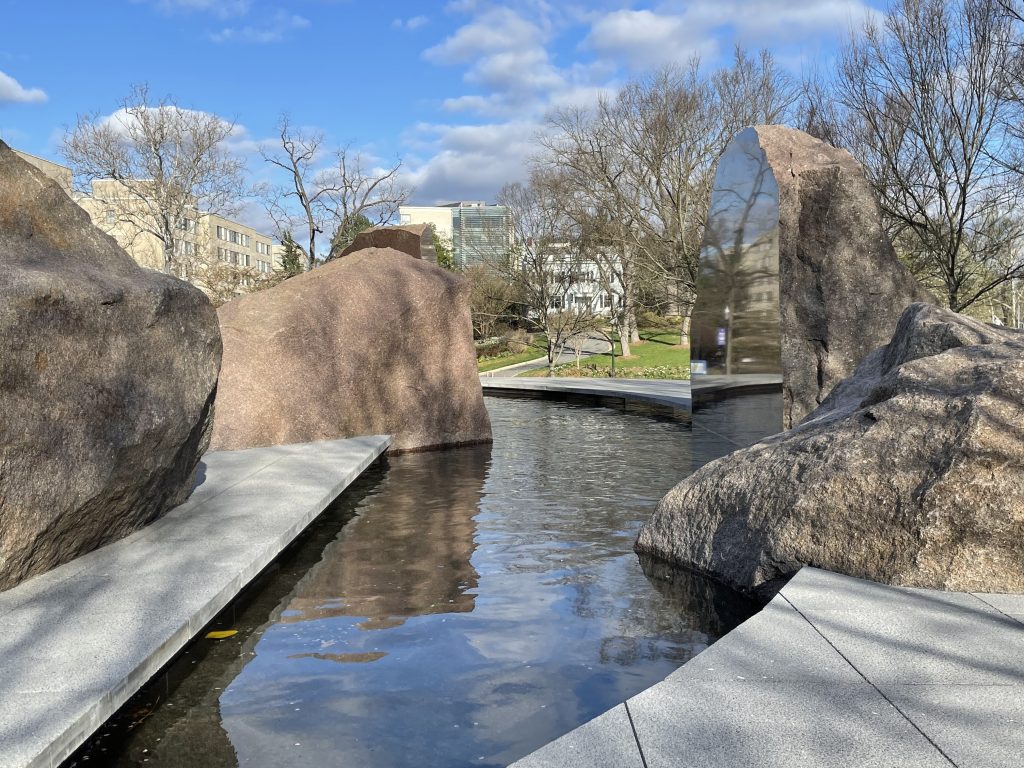
The reconfigured piece by Elyn Zimmerman had been renamed "Sudama."

Sarah Cascone

After six months of construction, American University in Washington, D.C., has unveiled Sudama, a public artwork featuring five enormous granite boulders surrounding a crescent-shaped pool of running water. The ambitious project is a reconfiguration of a site-specific work, formerly known as Marabar, by the 77-year-old artist Elyn Zimmerman, and its completion represents a successful preservation campaign for the landscape art community.
Three years ago, Zimmerman feared that Marabar, her 1984 sculptural installation at the entry plaza of the National Geographic Society—also in D.C.—was done for. National Geographic had drawn up plans to renovate their campus in 2017, and there was no room for the historic artwork in the redesign. Zimmerman’s only option for saving the piece would be to physically move roughly 450,000 pounds—or 225 tons—of South Dakota granite and its central pool of water, powered by a complex hydroelectric system, somewhere new.
Without outside resources, such a monumental task was beyond Zimmerman’s capabilities—but National Geographic was standing firm, insisting that Marabar was incompatible with plans to create a central entrance pavilion uniting its three buildings.
“I was in despair years ago when I heard that National Geographic was expanding [its] campus,” Zimmerman said at the dedication ceremony for the reinstalled work on Tuesday, as reported by the Washingtonian. “I didn’t know what was going to happen to my sculpture.”
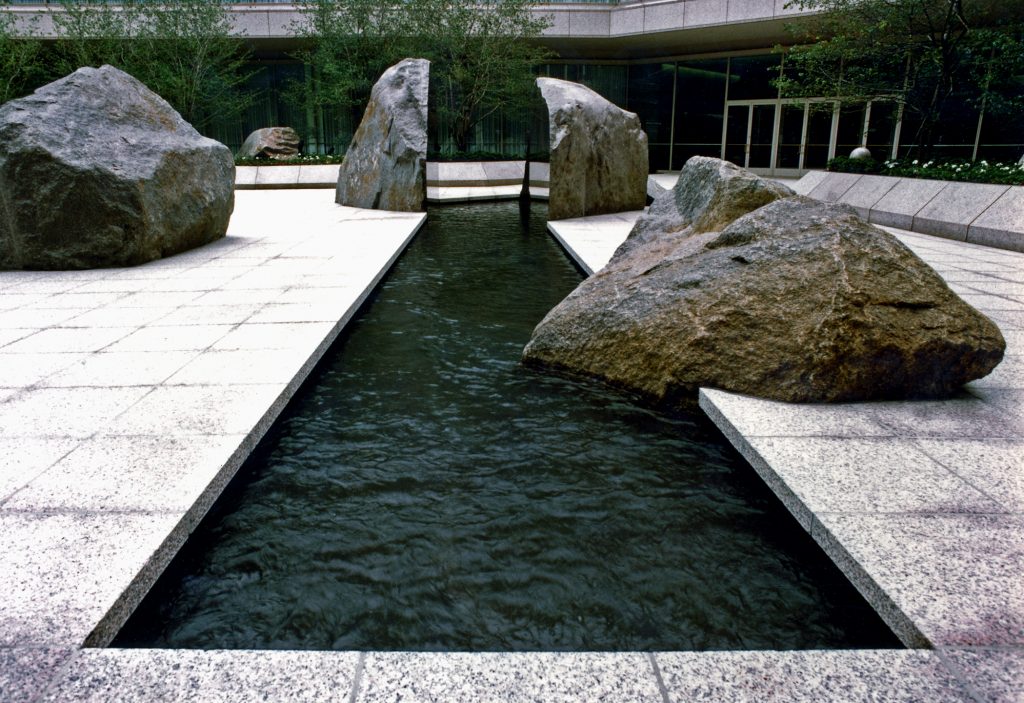
Elyn Zimmerman, Marabar (1984) at the National Geographic Society Headquarters, Washington, D.C. Photo courtesy of Elyn Zimmerman.
Into the fray stepped the Cultural Landscape Foundation (TCLF), a nonprofit advocacy and education group dedicated to landscape architecture. On March 31, 2020, it named Marabar to its annual Landslide list of at-risk landscapes, triggering letters of protest from prominent art world figures hoping to preserve it.
An important Land Art work by a female artist created at a time when such opportunities were rarely given to women, Marabar was also Zimmerman’s first major public commission. Upon realizing that such a significant piece was threatened by the campus redesign, the city’s Historic Preservation Review Board decided to reconsider its approval of the project.
A year later, the board ruled in favor of National Geographic—but, bowing to public pressure, the society agreed to help Zimmerman locate an appropriate new home for the piece, and to pay for the work’s transportation and relocation. By late December, the plan was in place to bring Marabar to American University as a gift from National Geographic.
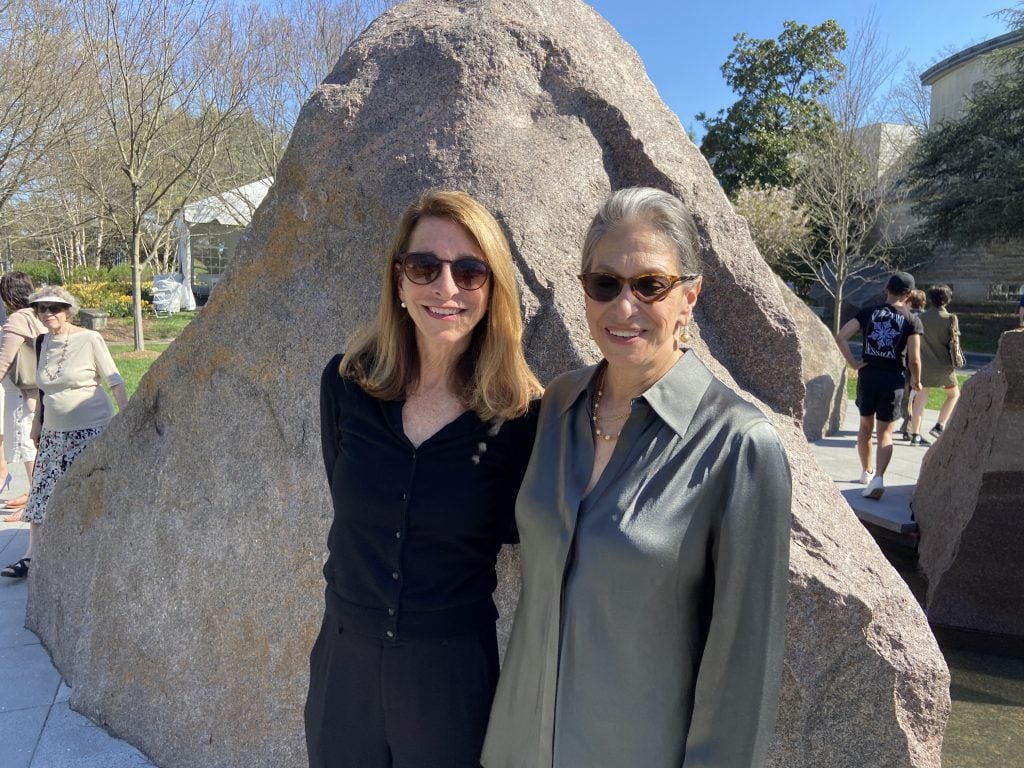
Kathryn Keane, former National Geographic Society vice president of public experiences and director of the society’s museum, and artist Elyn Zimmerman at the unveiling of Sudama, a reconfiguration of Zimmerman’s National Geographic Society Land Art work Marabar, at its new home at American University in Washington, D.C. Photo by Charles A. Birnbaum, courtesy of the Cultural Landscape Foundation.
“Though we regret the loss of Marabar at its original location, we are pleased that its creator, artist Elyn Zimmerman, with the support of National Geographic, retained the ability to control its reconfiguration and relocation to the American University campus,” TCLF president and CEO Charles A. Birnbaum said in a statement. “Had TCLF not intervened beginning in March 2020, when the artist was resigned to the loss of one of her most important works, Zimmerman’s installation would likely have been demolished.”
Instead, the massive work made a four-mile journey across town, transported via flatbed trucks and put into place with a crane.
Moving the artwork meant reimagining it to better fit the elliptical contours of its new home—hence the new name. Marabar was named after the fictional cave network in E.M. Forster’s A Passage to India; Sudama after one of the real-life caves that inspired the 1924 novel, which features a third-century B.C.E. temple carved into the rock. (Zimmerman visited these caves in 1976, in a formational trip for the young artist.)
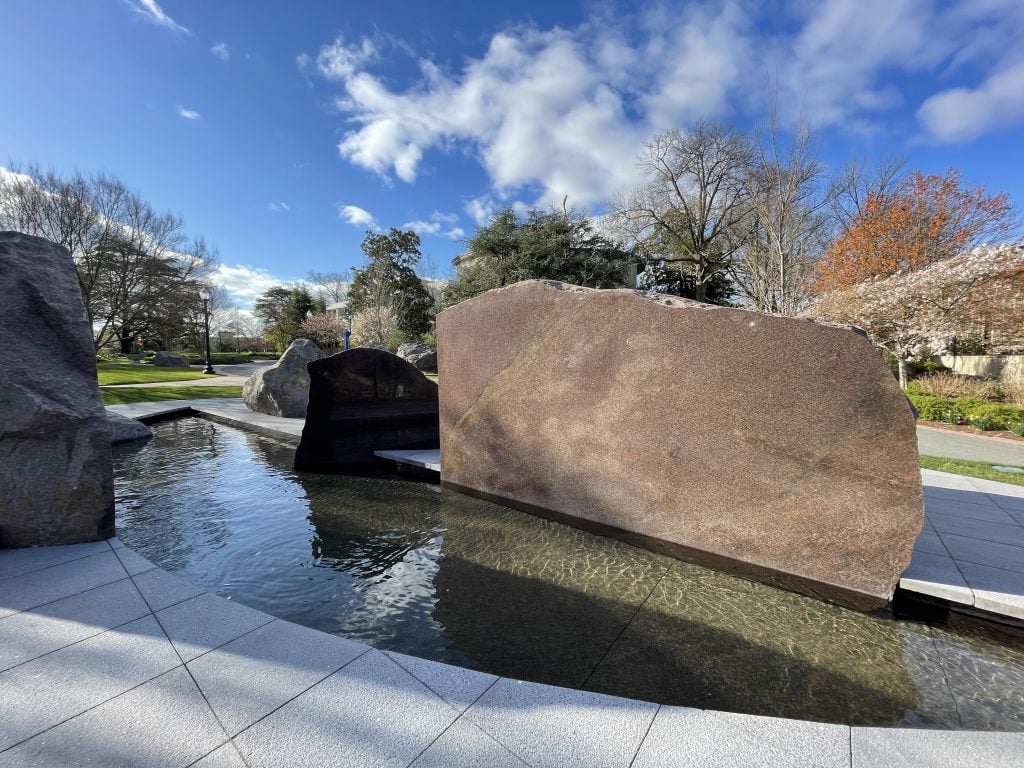
Elyn Zimmerman, Sudama (1984/2023) at American University, Washington, D.C. Photo ©Nord Wennerstrom, courtesy of the Cultural Landscape Foundation.
At American, Zimmerman’s work is situated atop a hill, with the granite boulders—three of which feature polished cross sections, like geodes split in half—and seven smaller stones set around a curved pool amid flowering trees and other vegetation.
The university’s grounds were originally designed by landscape architect Frederick Law Olmsted, though much of his vision was never executed. With over 4,000 trees, the 84-acre campus has been an accredited public arboretum for 20 years—marking a sharp contrast from the urban environs at the National Geographic complex, with its narrow and rectangular granite plaza surrounded by buildings.
“The size and shape of the pool was changed to work with the new site,” Zimmerman told TCLF. “The polished and rough large rocks—the core of Marabar—were positioned slightly differently around the new pool. Although reminiscent of Marabar, the new setting, and a thorough cleaning and repolishing of worn spots after 40 years made the piece look new and unique, so it needed a new title.”
The result, Jack Rasmussen, director and curator of the American University Museum at the Katzen Arts Center, said in a statement, is “a reflective space—literally and figuratively. You see yourself, your surroundings, see the water, the smooth, polished stone, in that very special space.”
See more photos of both iterations of the work below.
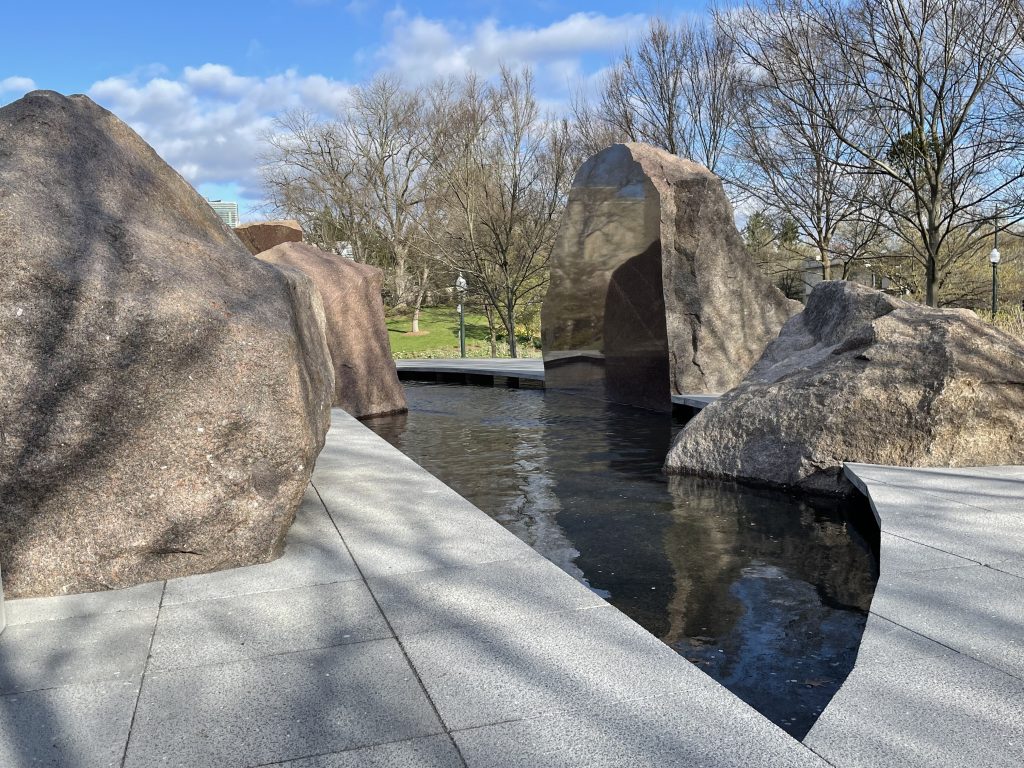
Elyn Zimmerman, Sudama (1984/2023) at American University, Washington, D.C. Photo ©Nord Wennerstrom, courtesy of the Cultural Landscape Foundation.
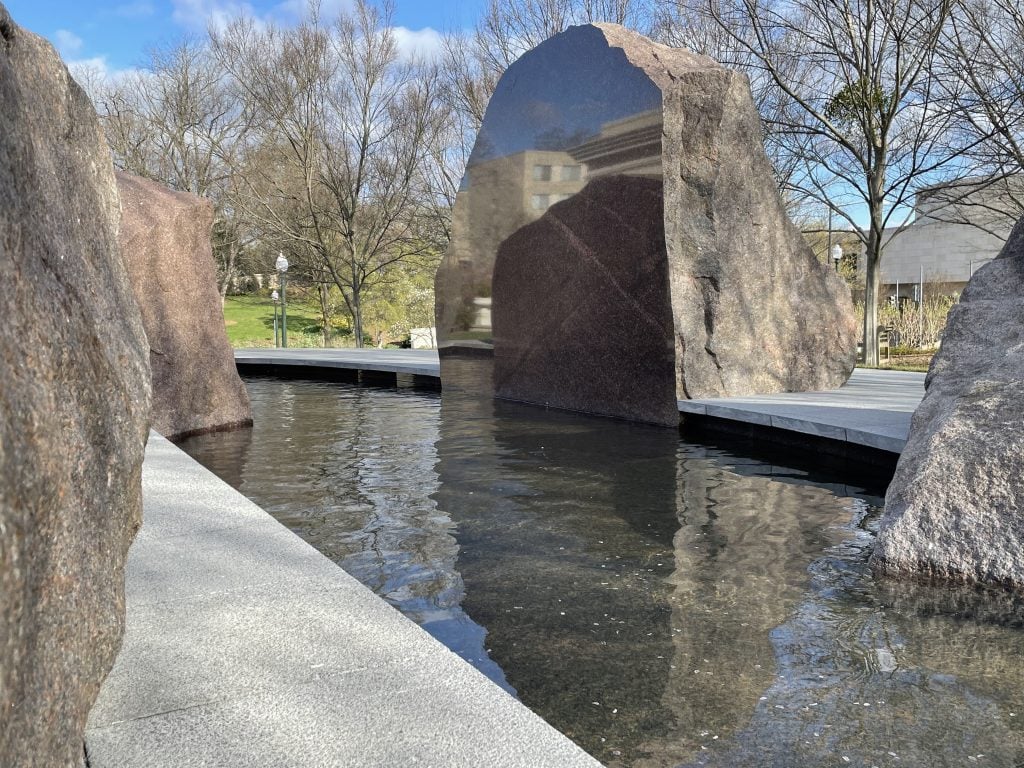
Elyn Zimmerman, Sudama (1984/2023) at American University, Washington, D.C. Photo ©Nord Wennerstrom, courtesy of the Cultural Landscape Foundation.

Elyn Zimmerman, Sudama (1984/2023) at American University, Washington, D.C. Photo ©Nord Wennerstrom, courtesy of the Cultural Landscape Foundation.
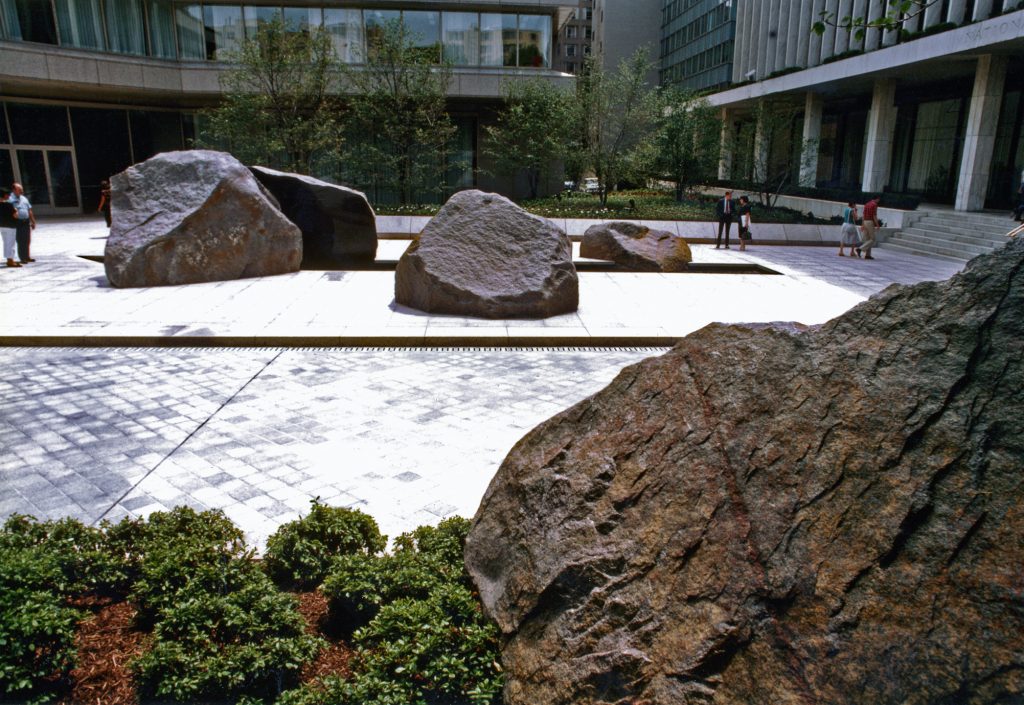
Elyn Zimmerman, Marabar (1984) at the National Geographic Society Headquarters, Washington, D.C. Photo courtesy of Elyn Zimmerman.
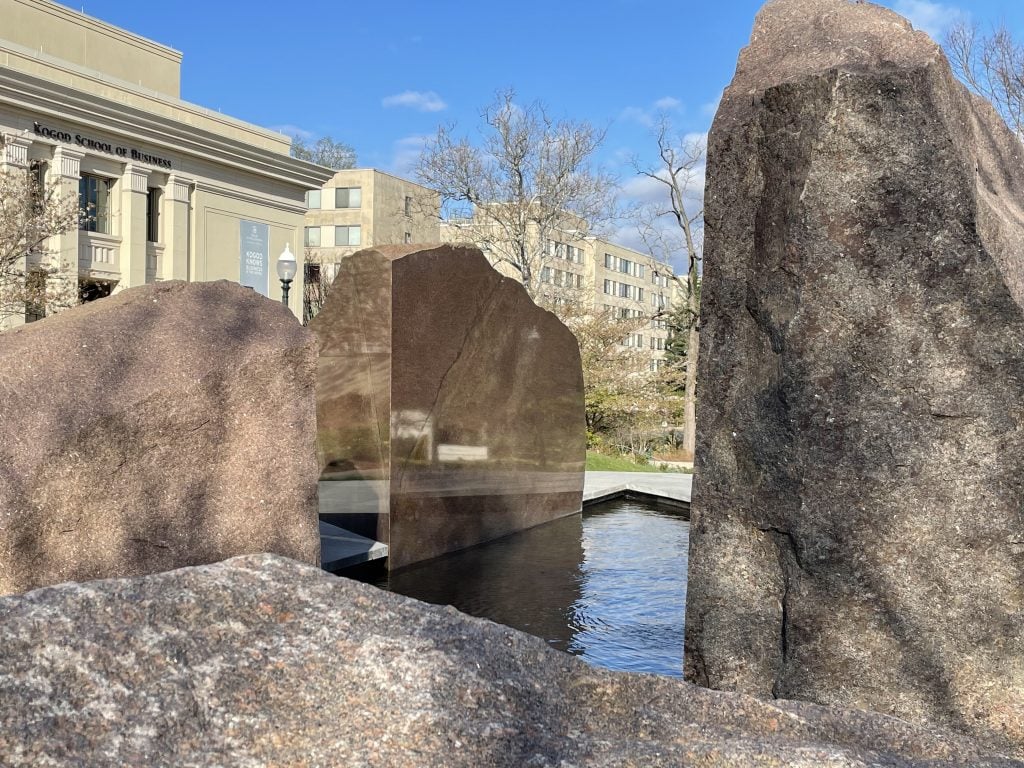
Elyn Zimmerman, Sudama (1984/2023) at American University, Washington, D.C. Photo ©Nord Wennerstrom, courtesy of the Cultural Landscape Foundation.
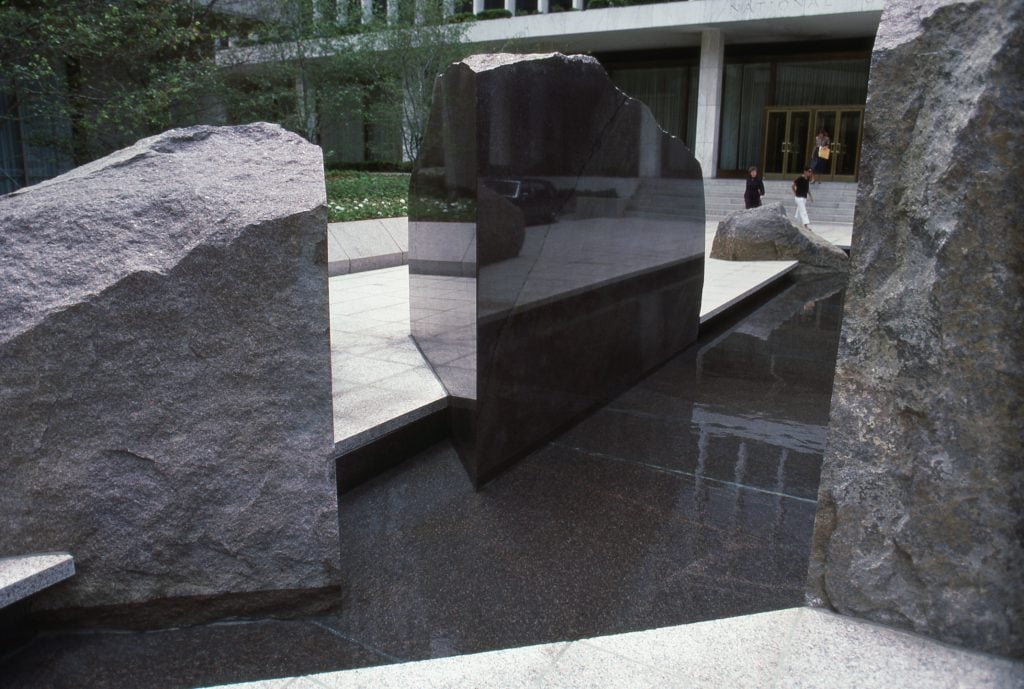
Elyn Zimmerman, Marabar (1984) at the National Geographic Society Headquarters, Washington, D.C. Photo courtesy of Elyn Zimmerman.

Elyn Zimmerman, Marabar (1984) at the National Geographic Society Headquarters, Washington, D.C. Photo courtesy of Elyn Zimmerman.